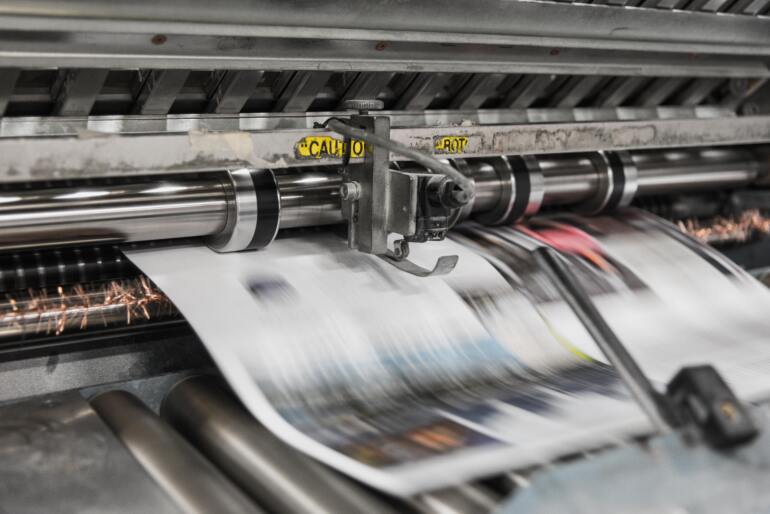Publication
Feb 23, 2021
Avoiding A Media Ambush: Responding to OSHA and Media Press Releases

1. OSHA Issues Press Releases to Publicize its Citations and Penalties.
Following a high profile accident, fatality or catastrophe, federal OSHA will often conduct an inspection. Within the next six months, OSHA may choose to issue citations. Unbeknownst to many employers, OSHA regularly publishes news releases, often accompanied with factual allegations about an employer’s failure to abide by safety rules. See https://www.osha.gov/news/newsreleases/enforcement. OSHA alleges penalty amounts and severe characterizations of any citations issued. OSHA press releases were a favored tool of the agency during the Obama administration: Dr. David Michaels favored press releases as a “shaming” technique that he believed could magnify the effect of safety enforcement in the industry. While the number of press releases declined during the Trump administration, the agency used the tactic aggressively during the COVID-19 pandemic to publicize the agency’s COVID enforcement efforts. We anticipate that under the Biden administration OSHA may utilize the press release tactic with greater frequency.
2. Reputational and Business Harm from OSHA Press Releases
OSHA’s press releases -- founded on the mere allegations in OSHA citations -- can have damaging effects on an employer’s reputation and business relationships. OSHA press releases are often picked up and mentioned in local or national news outlets, magnifying the negative publicity in the region. Employers may face adverse professional rankings from third party safety tracking services and even receive bans from certain customers for bidding on potential contracts or work projects. Worse still, based merely on those allegations, OSHA may place the employer on its Severe Violators Enforcement Program (https://www.osha.gov/dep/enforcement/svep_white_paper.pdf), further branding the employer as a “severe” violator of the OSHA regulations.
3. Responding to OSHA Press Releases
Serious incidents stir strong emotions, and employers must be careful, thoughtful, and deliberate in how they respond to OSHA press releases. Media may analyze and comment on the employer’s response (or lack of response) to an OSHA press release. Any comment could have serious repercussions for the employer, and risk worsening the reputational harm. Depending on the industry and the public-facing nature of the company, the employer may consider preparing an affirmative press release and talking points to counter OSHA’s narrative in a professional and respectful manner. Employers may choose not to communicate at all with the media. If you do decide to engage with the media, we recommend preparing appropriate comments rather than stating only “no comment.” We recommend the following themes and talking points:
- Acknowledge that a serious incident or a major inspection occurred.
- Offer respectful condolences and concern for the health of any injured employees or other individuals.
- State that the Company’s investigation into the accident is ongoing.
- State that the Company has and will continue to work cooperatively with OSHA and any other applicable government agency during their inspections of the worksite.
- Do not criticize OSHA or its personnel.
- Respectfully suggest that the Company disagrees with OSHA’s issuance of any citations, and that the Company will continue to discuss a resolution of the citations. If necessary, also indicate that the Company has contested the citation through the appropriate change.
- Do not speculate as to the cause of the accident, admit fault, offer an apology, or suggest that the Company violated any OSHA regulations or its own policies.
- Do not blame any employee for the occurrence of the accident. Though the accident in fact may have been the result of unforeseeable employee misconduct, a press release or media comment is not the proper forum to assert that affirmative defense or fault on the part of the employee.
- Do not suggest that any employee involved in the incident is suspected to have been asleep or impaired by drugs or alcohol.
- Maintain employee privacy; do not disclose the name of any individuals involved in the incident.
- Note the Company’s longstanding commitment to keeping all employees safe and healthy at the workplace.
With these tips, employers can navigate the stressful process of responding to OSHA press releases and avoid hasty and misguided press releases which create a false impression regarding the employer and its commitment to employee safety and health. See our other article to understand the broader effort to manage post-accident communications, including internal emails, to preserve legal privileges and limit liabilities. Employers should be closely assessing any OSHA citations issued, and consider filing a notice of contest within 15 working days of receipt of the citation if the employer is unable to reach an informal resolution with the agency. For more information relating to defending OSHA citations, responding to OSHA press releases, or any other safety law topic, please contact Mark A. Lies, II at mlies@seyfarth.com or Adam R. Young at ayoung@seyfarth.com.
